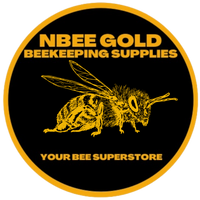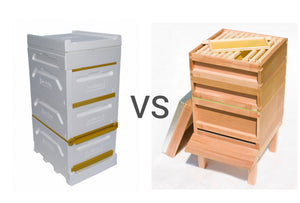Hey there, fellow bee enthusiasts! Today, let's take a stroll through the eco-friendly garden of beekeeping and shine a light on a potential dark spot – polyurethane beehives.
While these hives have gained popularity in recent years because they boast durability and insulation, there's a little environmental cloud that hovers over them. Let's break it down.
-
Chemical Footprint: Picture this: the journey from raw materials to a shiny new polyurethane beehive involves a chemical dance. Some of these chemicals may raise eyebrows in the eco-conscious crowd. The production process can contribute to the release of substances that aren't exactly a bee's (or a human’s) best friend.
-
Sunlight Sensitivity: Polyurethane, like that favorite beach towel of yours, doesn't take kindly to prolonged sun exposure. UV rays can trigger a bit of a meltdown, causing the material to break down over time. Now, while it might not be a total catastrophe, it does mean your hive might have a shorter shelf life than you bargained for.
-
Recycling Conundrum: Recycling polyurethane can be a bit tricky. Not every recycling facility is equipped to handle this material. So, when the time comes to retire your hive, finding a green exit might be a tad more challenging. It's like trying to fit a square peg into a round hole – not impossible, but definitely not seamless.
-
Missing the Wooden Charm: There's something about the natural, earthy vibe of wooden hives that makes a beekeeper's heart flutter. Polyurethane hives, not so much. They lack that rustic charm and smell that wooden counterparts bring to the apiary. It's like comparing a buzzing garden party to a sterile office meeting – one just has more personality!
-
Environmental Preferences: Some green-minded beekeepers might lean towards materials with a smaller environmental footprint. Sustainably sourced wood, for instance, may tick more boxes in terms of eco-friendliness. It's like giving Mother Nature a high-five instead of a 'meh.'
Now, don't get us wrong; polyurethane beehives have their perks. They're like the SUV of beehives – sturdy, reliable, and they get the job done. However, just like any relationship, it's crucial to acknowledge the quirks and make an informed choice.
Beekeeping is a dance with nature, and understanding the environmental rhythm of your hive material is all part of the beekeeping boogie. So, whether you go wooden, polyurethane, or something in between, let's keep the buzz alive while treading lightly on our green planet. Happy beekeeping! 🐝


Comments